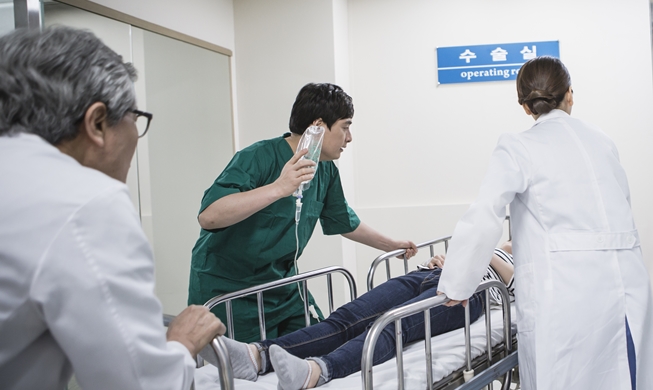Professor Kim Youn Sang of Seoul National University and Managerial Researcher Kwon Soon-Hyung of the Korea Electronics Technology Institute (KETI) jointly developed the technology that uses the flow of water droplets to generate electricity. Finishing their research in April this year, they have now succeeded in developing energy-harvesting elements that can transform and store electrical energy from the flowing movements of water drops.
Energy-harvesting elements have the ability to transform disposable energy, a form of energy that exists in our daily routines, such as when we move, natural phenomena or even sound, and change it into useful forms of energy. In the past, researchers focused on developing new technologies which could change heat, pressure or friction into electricity. This time, however, researchers used the movement of flowing water.
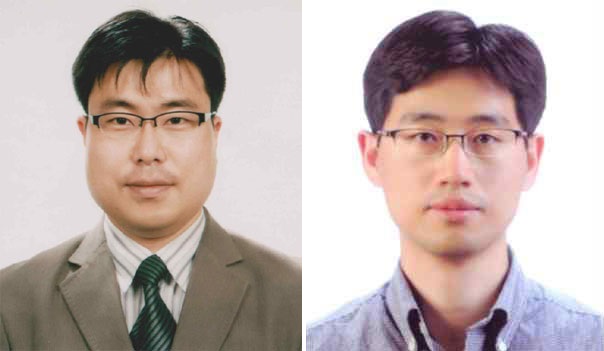
Professor Kim Youn Sang of Seoul National University and Managerial Researcher Kwon Soon-Hyung of KETI
As part of the research, scientists were able to produce up to 0.42 milliwatts of electricity, enough to light up three or four LEDs, and store the collected energy in a special storage device smaller than a mobile phone battery.
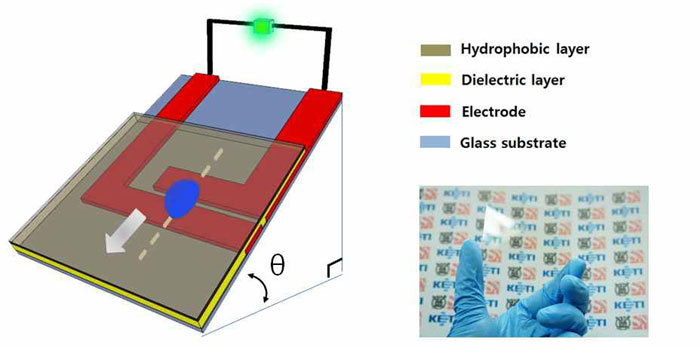

When a drop of water falls on a special glass plate transducer, made with thin layers of special materials, its flow causes a change in the electrical charge, thus producing electricity.
About ten years ago, scientists began looking into how to produce electricity from water drops, but most research concentrated on special situations in which pressure was applied to water drops in order to produce electricity. This is the first time that researchers used the flow of water, from a shower or a flushing toilet, for example, to produce electricity, enough to light up a few LEDs.
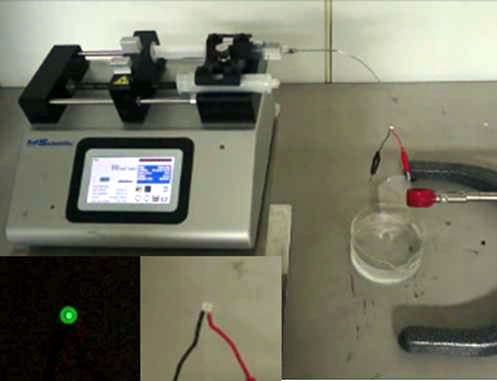
An LED is lit as a drop of water falls on the glass plate transducer.
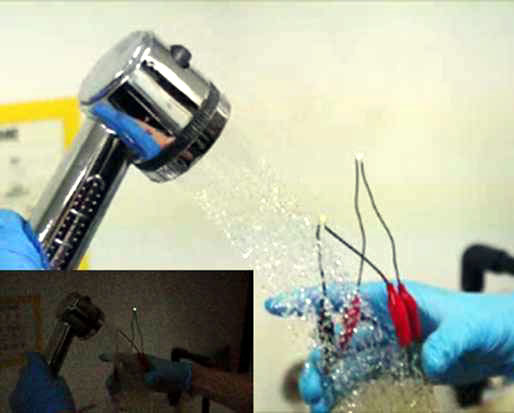
As even more drops of water flow across the glass plate transducer, ever more electricity is produced, enough to light up a series of LEDs.
This technology is in the early stages and can currently only produce a small amount of electricity, only enough to light up a few LEDs. Experts forecast, however, that in the future the technology could be applied to a wide range of fields, since it can produce electricity from various forms of "living water," such as in the kitchen or in the bathroom. It is also environmentally friendly, since it uses water as the main tool to produce electricity.
Researcher Kwon said, “This technology holds significance as it proves that we can produce electricity from various types of water, such as raindrops or household water, such as when we wash the dishes. It enables us to produce electricity at home or in the office, not at a distant power plant.”
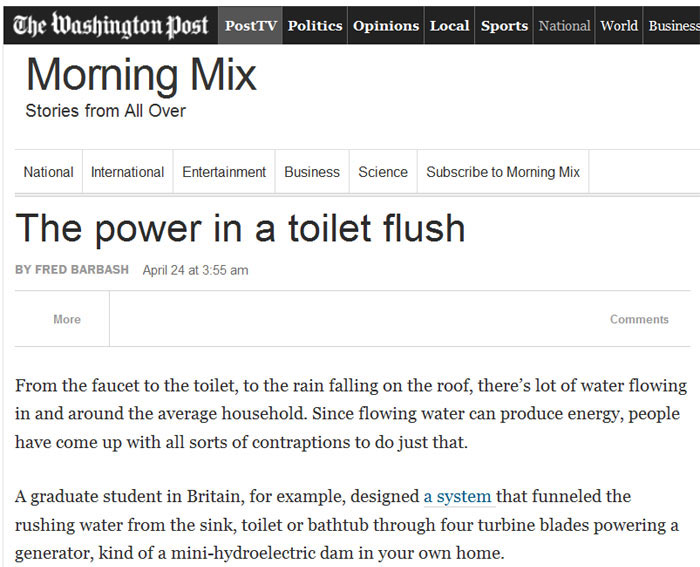
A captured image of the Washington Post article that reported on the new technology that can produce electricity from water drops.
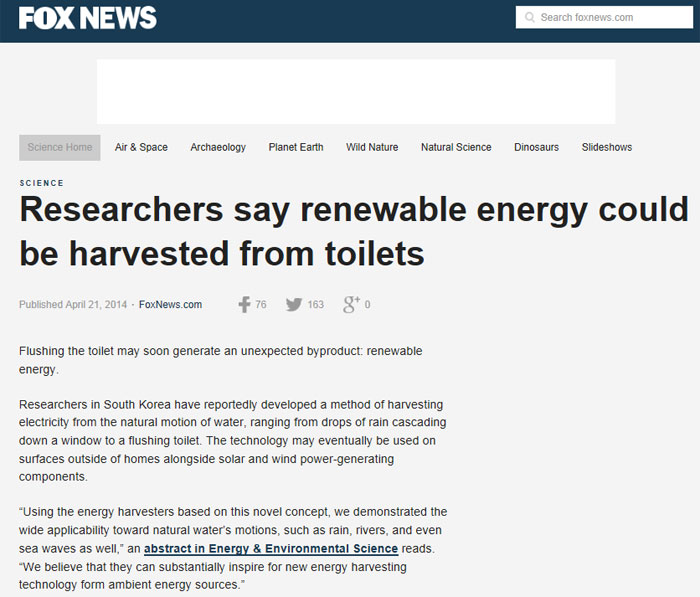
Fox News published an article on April 21 that reported on the new technology. It can produce electricity from a flow of water.
This technology has received a lot of attention from both media and academia. Reports have focused on the technology's potential to transform an individual household's "living water" into electricity.
The Washington Post wrote about the technology on April 24 in an article titled “The power in a toilet flush.” It said that, “It doesn’t take a turbine or rushing water to generate power. A few drops will do.”
On the same day, the U.K.’s Daily Mail focused on the potential use of the technology, in its article titled “Water good idea! Scientists manage to harvest electricity.”
In “Researchers say renewable energy could be harvested from toilets,” published on April 21, Fox News said, “The technology may eventually be used on surfaces outside of homes alongside solar and wind power-generating components.”
Finally, the U.K.’s Royal Society of Chemistry introduced the technology in its April 15 edition of “Chemistry World” and in the April 1 edition of “Energy & Environmental Science.”
To see a demonstration of the electricity-producing technology, please click on the link below.
http://www.youtube.com/watch?v=MsLpOoSzK74
By Yoon Sojung
Korea.net Staff Writer
arete@korea.kr
Most popular
- Slew of festivals, events scheduled in downtown Seoul in May
- Korea.net welcomes 2025 K-influencers, Honorary Reporters
- 2025 Honorary Reporter class pledges to spread 'real Korea' worldwide
- US urged to exempt tariffs on Korea in first '2+2' trade talks
- Korean culture festival in Cuba marks 1st year of bilateral ties
